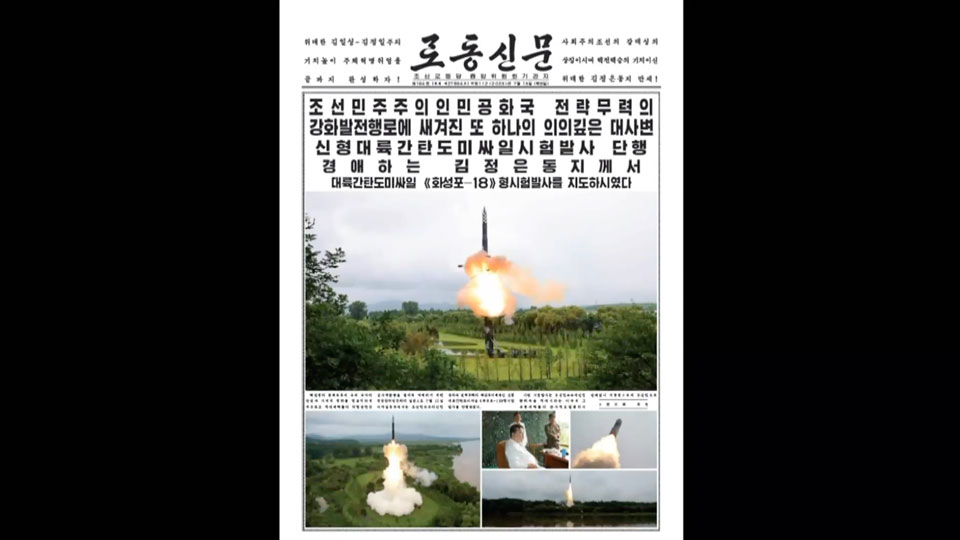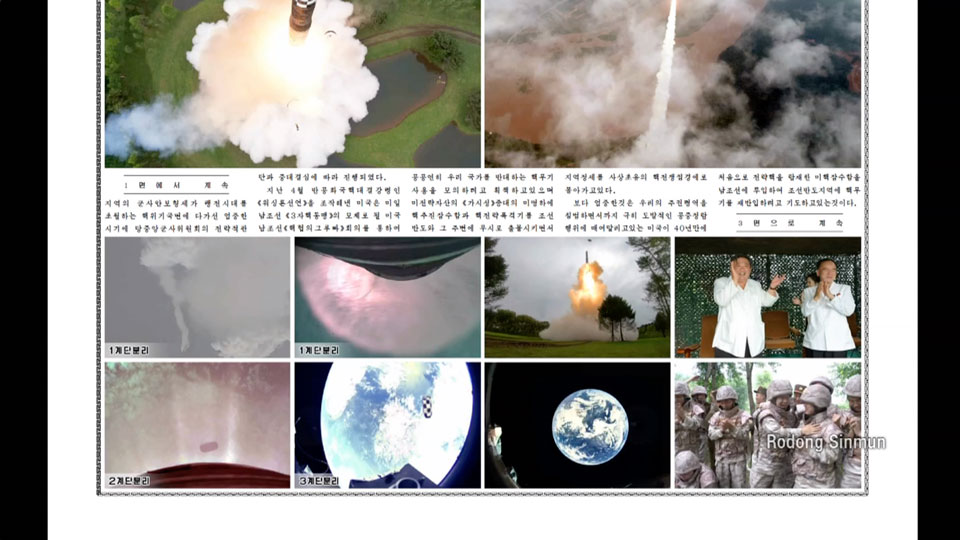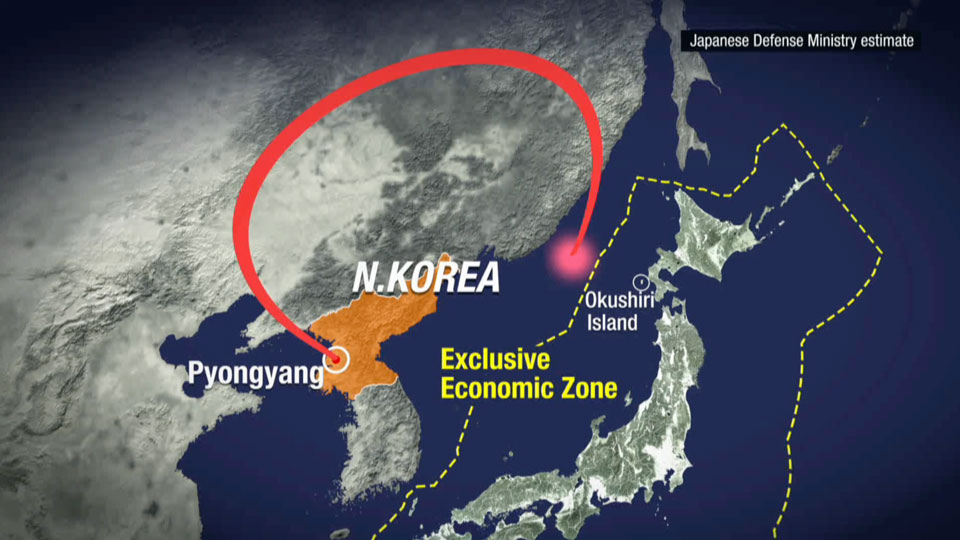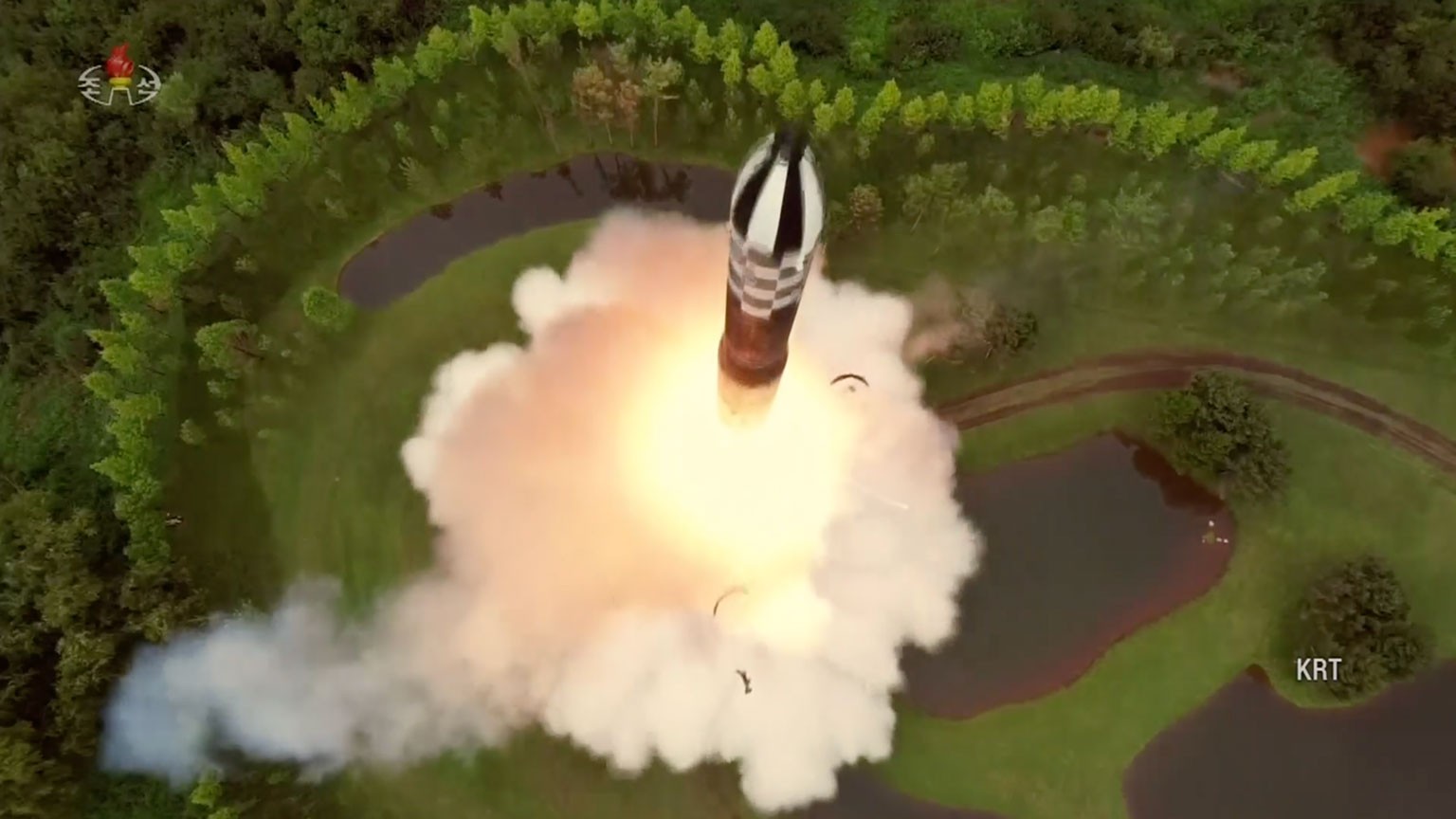The story was front-page news in the official Rodong Sinmun newspaper, which carried 17 photos from the launch.
The missile reportedly traveled about 1,000 kilometers, reached an altitude of more than 6,600 kilometers and flew for an unprecedented 75 minutes.


The images show a mobile launch pad with nine wheels on each side. The flames that spew out like a skirt from the checkered missile are characteristic of solid fuel.
Other photos show a three-stage separation process, and even Earth captured from space.
State-run Korean Central Television showed footage of the Hwasong-18 being transported to the launch site. The missile appears to ignite after being fired into the air.
Element of surprise
The Hwasong-18 is North Korea's first ICBM to use solid-fuel, which allows for faster launches that could theoretically take an enemy by surprise.
The regime unveiled the missile during a major military parade in February and fired it for the first time on April 13. Before that, officials tested a high-output solid-fuel engine in December 2022.
Observers say North Korea is keen to show of its military might in the run-up to July 27, which marks the 70th anniversary of the armistice that ended fighting in the Korean War.
KCNA says Wednesday's launch was in retaliation to increased security cooperation between the United States, South Korea and Japan.
Kim is quoted as saying "a series of stronger military offensives will be launched" until Washington and Seoul admit the "shameful defeat" of their hostile policy.
Analysis from Japan
Japanese Defense Ministry officials say a suspected ICBM fell into the Sea of Japan off Hokkaido's Okushiri Island.

Koda Yoji, a former vice admiral of the Self-Defense Forces, says Pyongyang will need to carry out several more launches to confirm the Hwasong-18's reliability.
Koda spoke to NHK on Wednesday. "If it was a Hwasong-18, the launch will have provided North Korea with a good opportunity to collect data on the solid fuel and the missile's speed."
For an expert view from Seoul, NHK World anchor Kawasaki Rika spoke with Professor Jaechun Kim at Sogang University. He is an expert on international relations and security, and suggests Pyongyang timed the launch to coincide with NATO's annual summit.
